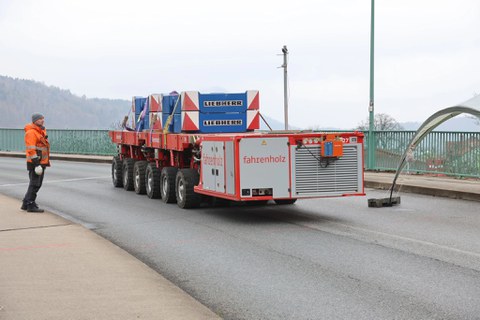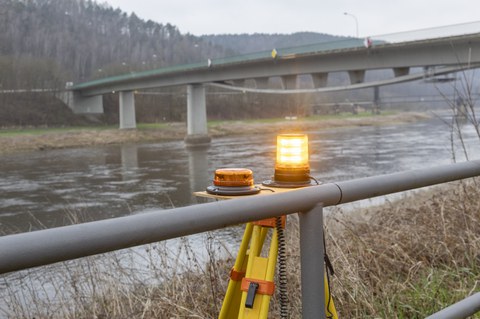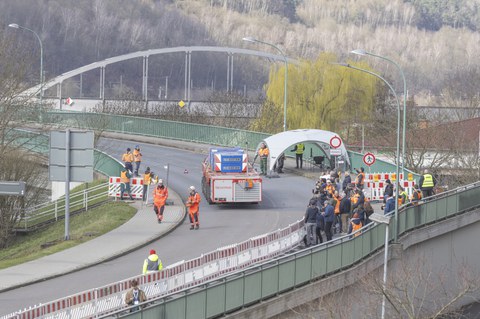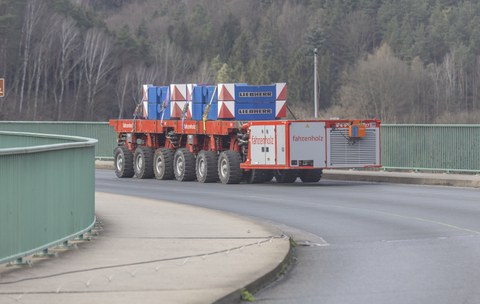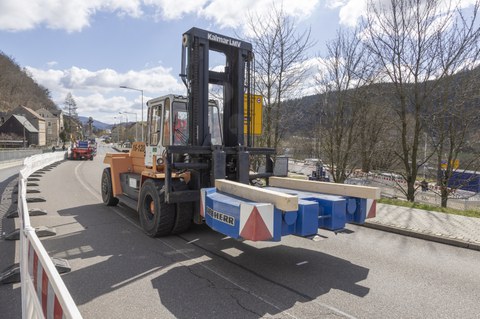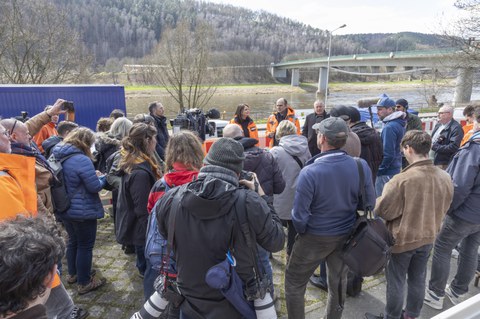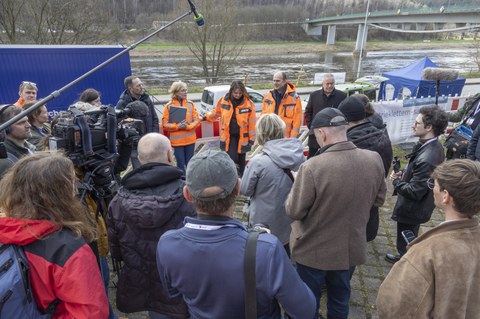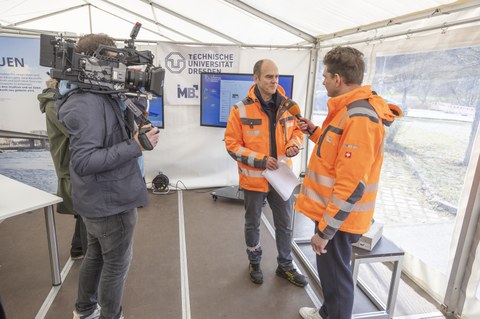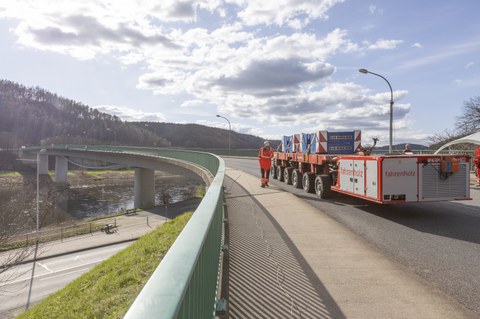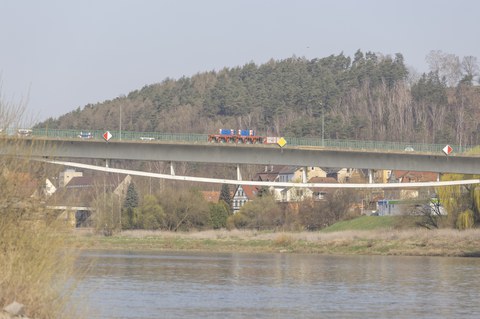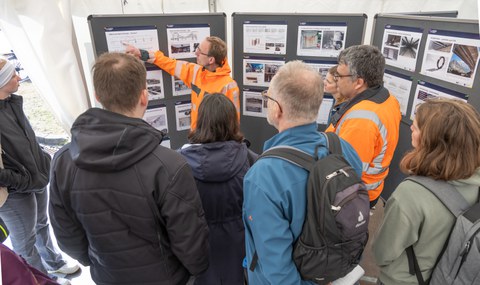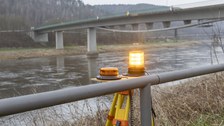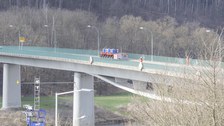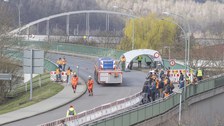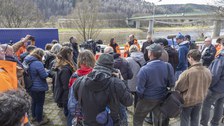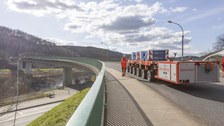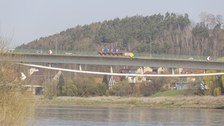Apr 02, 2025
Load tests on the Elbe bridge in Bad Schandau with the participation of TU Dresden
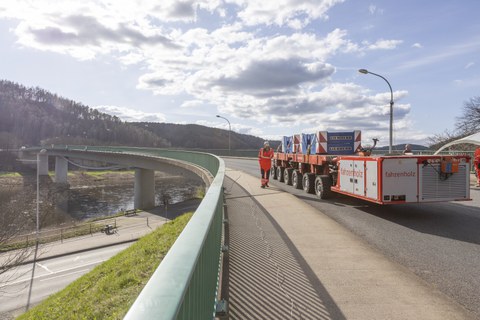
The heavy-duty module with additional weights on the Elbe bridge in Bad Schandau
Since yesterday, load tests lasting several days have been running in Bad Schandau on the Elbe bridge, which will be closed in November 2024. The aim of the three-day tests is to analyze the load-bearing capacity of the bridge.
The Institute of Concrete Structures (IMB) at TU Dresden is on site and will be giving an insight into the bridge and the load test in the visitor tent and will be available to answer questions. So far, everything is going according to plan and public interest in the investigations is very high.
An important milestone
Minister of State Regina Kraushaar emphasized the importance of these tests at yesterday's press event: "Today's start of the load test is an important milestone for all of us. I very much hope that we will soon be able to use the bridge again, perhaps with restrictions for heavy vehicles. However, the priority for the next few days is that the test runs smoothly and that we gain the necessary insights. Because only if the bridge is classified as safe beyond doubt can it be approved."
Scientific implementation by MKP GmbH and TU Dresden
Professor Steffen Marx from TU Dresden is leading the test and explained the procedure on the first day of testing: "Today, we are carrying out two of the scheduled five load positions. First, for safety reasons, we will only drive onto the bridge with the unmanned, remote-controlled heavy-duty module. Extensive measurements are carried out at various stopping points. If no damage occurs during the crossing, the module is gradually loaded with additional crane weights - up to a total weight of 80 tons."
After this phase, a forklift truck is used to distribute further weights on the bridge, always ensuring that the load level already reached is not exceeded in order to prevent any risk to personnel. The goal of the first day: a total load of 280 tons.
Sequence of the load tests
The heavy-duty module will then cross the bridge several times, with additional weights being successively loaded and distributed in different ways. The aim is to simulate all the most unfavorable load situations that could arise due to traffic and temperature. In order to carry out the test optimally, extensive preparations had already taken place the previous week.
Decisive basis for the future of the bridge
These tests are crucial for the decision on a possible reopening. The load-bearing capacity of the bridge can only be reliably determined through real load tests, as the feared stress corrosion cracking cannot be reliably detected from the outside. Computational methods alone are not sufficient here.
Once the tests have been completed, a comprehensive evaluation of the data collected is carried out. Only when independent, publicly appointed test engineers confirm the load-bearing capacity of the bridge can a decision be made on whether to reopen it. This is expected to be made in one to three weeks.
The people of Bad Schandau are eagerly awaiting the results - with the hope that the bridge can soon be reopened to traffic.


